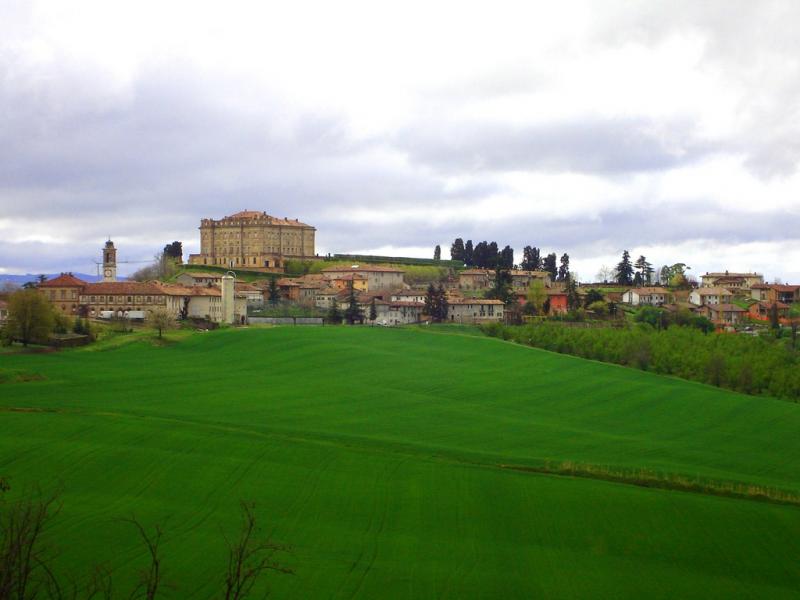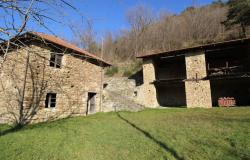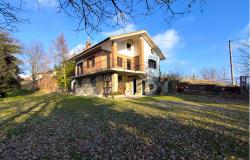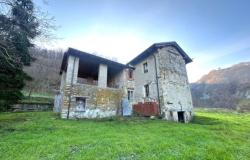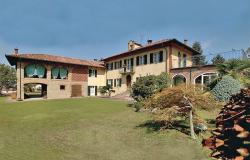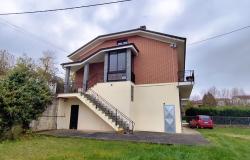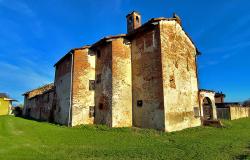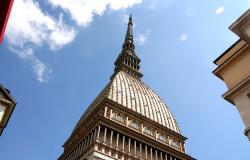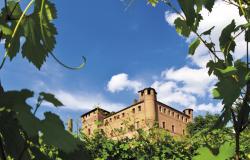We have selected three villas where a glorious past meets a vibrant present.
Imagine viewing a life-size painting by Vincenzo Dandini, lovingly framed by gilded scrollwork, taking pride of place over blue and white china and 18th century furniture. Then imagine looking up and taking in vivid, ceiling-long fresco by Pietro Scorzini, or turning to one side and catching glimpses of a perfectly trimmed Italian garden.
 Visiting a country house is like having your own private peek in the history, lifestyle and culture of a family, and of the time and place where it lived. Little beats the charm of admiring works of art in the context they were intended for—and never more so than in Italy, where art, architecture and way of life were deeply linked with the country’s tumultous political affairs.
Visiting a country house is like having your own private peek in the history, lifestyle and culture of a family, and of the time and place where it lived. Little beats the charm of admiring works of art in the context they were intended for—and never more so than in Italy, where art, architecture and way of life were deeply linked with the country’s tumultous political affairs.
There are, of course, a number of well known historic villas open to the public across Italy. Places such as Villa Demidoff, near Florence, or the Castello di Racconigi, near Turin, are jaw-droppingly beautiful house museums, testament of the events and art of the past. But some of the most charming historic homes have the added attraction of being still alive today. These lived-in houses, where the present meets a glorious past, never risk feeling preserved in aspic.
We have picked three that capture the artistic spirit of their time and setting while continuing to be someone’s home. If you are drawn to country houses not just as containers of artistic masterpieces but also as working estates, you should not miss them.
Castello di Guarene, Guarene, Piedmont
 The golden bulk of the Castello di Guarene stands proudly over the vineyards and truffle-studded woods of the Tanaro valley. Its grand but graceful, perfectly proportioned brick façade speaks of the Baroque style that marked Piedmont’s finest hour. While much of Italy declined during the 17th and 18th century, Piedmont emerged as a strong, independent, rich jewel of a state.
The golden bulk of the Castello di Guarene stands proudly over the vineyards and truffle-studded woods of the Tanaro valley. Its grand but graceful, perfectly proportioned brick façade speaks of the Baroque style that marked Piedmont’s finest hour. While much of Italy declined during the 17th and 18th century, Piedmont emerged as a strong, independent, rich jewel of a state.
This inevitably created a thirst for an architecture that would reflect the country’s growing international importance, and that of the Savoy dynasty that ruled it. So the Baroque period gave Piedmont majestic castles, opulent villas and elegant churches, but the natural restraint typical of the Piedmontese prevented it falling into the ornate excesses and religious truculence that marked the period in other corners of the world.
Instead, the Piedmontese Baroque, particularly in the interpretation of its foremost architect, Filippo Juvarra, played more on the interaction between setting and architecture to create a sense of the spectacular. Both Juvarra and his scenic architectural style are at the heart of the Castello di Guarene, which was designed by Count Carlo Giacinto Roero in the early 18th century to replace a dilapidated medieval manor.
 Roero greatly admired Juvarra, and his castle, which appears suddenly at the end of the village, soars high over the sinuous curves and orderly vineyards of the Alba countryside, framed to formal perfection by the neatly clipped topiaries of the Italian garden.
Roero greatly admired Juvarra, and his castle, which appears suddenly at the end of the village, soars high over the sinuous curves and orderly vineyards of the Alba countryside, framed to formal perfection by the neatly clipped topiaries of the Italian garden.
The interiors are just as striking. Among the rooms that are open to the public are the magnificent Stanza del Vescovo, the Bishop’s bedchamber, with an extraordinary state bed whose hangings match the curtains; the Chinese rooms, especially the bedroom, with its bright-yellow bed painted in Chinese motifs by a Roman artist, and the exquisite Chinese style wallpaper which was imported from London in 1774; and the Galleria, whose stuccoes, furniture and frescoes have remained untouched over the centuries.
The castle is open for guided tours only on selected days in May, September, October and November. For more information, and to book a tour, call +39 331 7865505 or +39 338 4141407.
Villa Torrigiani, Camigliano, Lucca
 Perhaps it is the majestic avenue of mature cypresses, perfectly aligned with the stately cream façade. Or perhaps it is the statues, sheltered in niches next to the huge front door and windows. But Villa Torrigiani, in Camigliano, feels the grandest of all the extraordinary houses that pepper the hills around Lucca.
Perhaps it is the majestic avenue of mature cypresses, perfectly aligned with the stately cream façade. Or perhaps it is the statues, sheltered in niches next to the huge front door and windows. But Villa Torrigiani, in Camigliano, feels the grandest of all the extraordinary houses that pepper the hills around Lucca.
Originally built in the 16th century, it soon became the setting of a romantic drama. Towards the end of that century, Lucrezia Malpigli, one of the most beautiful women of her time, married Marquess Lelio Buonvisi, owner of the villa. But the Marchioness was already in love with another man, Massimiliano Arnolfini, whom her family had spurned because he wasn’t as rich and powerful as Buonvisi. Undeterred, Arnolfini and the lady Lucrezia continue to meet in secret, often at Villa Torrigiani. One June evening of 1593, the Marquess was promenading in Lucca with his wife when he was ambushed and killed. Arnolfini was deemed guilty of the murder and Lucrezia thought to be his accomplice. She escaped a harsh sentence by becoming a cloistered nun. He absconded but was eventually captured just outside the gates of Villa Torrigiani. Jailed in the Tower of Viareggio, he died fourteen years later.
The villa’s architecture, however, profited from the tragedy as the property was soon sold to the Marquess Nicolao Santini, Lucca’s ambassador to the French court, who turned it into a splendid mansion.
 Santini had the building remodelled, adding one floor and giving it a richer, more ornate look. He also commissioned fabulous Baroque gardens, of which one—the Flora garden—survives intact with its water jets, dazzling parterres and the statue-studded Wind Grotto.
Santini had the building remodelled, adding one floor and giving it a richer, more ornate look. He also commissioned fabulous Baroque gardens, of which one—the Flora garden—survives intact with its water jets, dazzling parterres and the statue-studded Wind Grotto.
Inside, frescoes by Pietro Scorzini echo the garden’s lush flora, providing the perfect backdrop for the rooms’ rich ceramics, beautiful tapestries and extraordinary paintings. Best of all is the vast, mouthwatering Salone, a triumph of intricate scrollwork, lavish gilding and original furniture adorned with two large paintings by Vincenzo Dandini and topped by an enormous fresco by Pietro Scorzini.
The villa Torrigiani is still owned by descendants of Nicolao Santini. It is open to the public from the first Saturday in March to the first Sunday in November every day except Tuesday. For more information, call +39 0583 928041.
Castello Dentice di Frasso, San Vito dei Normanni, Puglia
 The squat, square tower of the Castello Dentice di Frasso was the very first building of the now thriving town of San Vito dei Normanni. It was erected in the 12th century by Bohemond I, Prince of Antioch and a leader of the First Crusade, as a stronghold in the succession war he waged against his own brother, Roger.
The squat, square tower of the Castello Dentice di Frasso was the very first building of the now thriving town of San Vito dei Normanni. It was erected in the 12th century by Bohemond I, Prince of Antioch and a leader of the First Crusade, as a stronghold in the succession war he waged against his own brother, Roger.
Over time, the castle grew and changed hands from princes (Frederick of Aragon owned it in the 15th century) to barons (Ottavio Serra in the 17th century) and back to princes—the Dentice di Frasso, who still own it today.
Each owner bequeated something to the building—for example, the main arched entrance is the byproduct of an early 20th century development by architect Gaetano Marchietzek under orders of Prince Luigi Dentice di Frasso—but its intrinsically medieval façade, marked by crenellations, remains unchanged.
 The interiors however, are a different story, reflecting the castle’s 900 years’ history. Among the most interesting are the very masculin Fumer, where the lords of the house retired to talk politics and smoke cigars among books, plush armchairs and hunting trophies; and a coquettish Ladies’ Sitting Room, with its lace and pretty furniture.
The interiors however, are a different story, reflecting the castle’s 900 years’ history. Among the most interesting are the very masculin Fumer, where the lords of the house retired to talk politics and smoke cigars among books, plush armchairs and hunting trophies; and a coquettish Ladies’ Sitting Room, with its lace and pretty furniture.
What makes the castello really special, however, is that you can stay there. The Dentice di Frasso, who live there all year round, run a bed & breakfast. Guests can stay in idiosyncratic rooms full of original furniture, and fancy themselves kings and queens—after all, king Victor Emmanuel III and his wife Elena stayed here on their way to Greece in the early 20th century.
For more information call +39 0831 951459.
